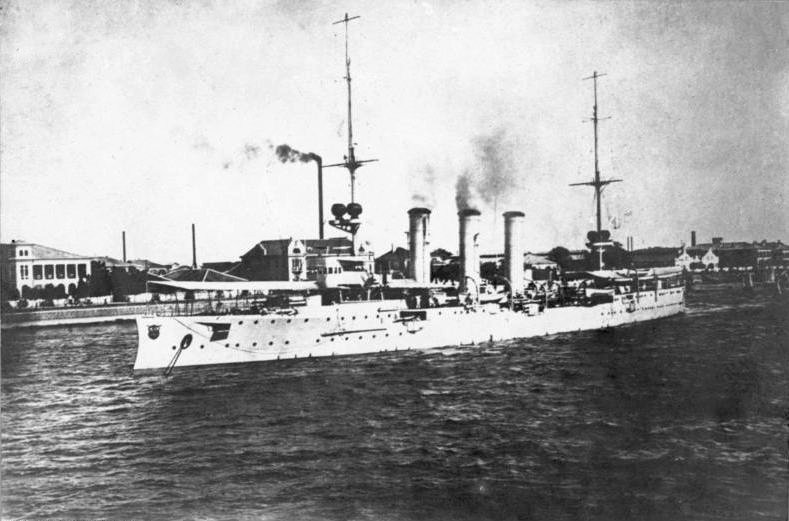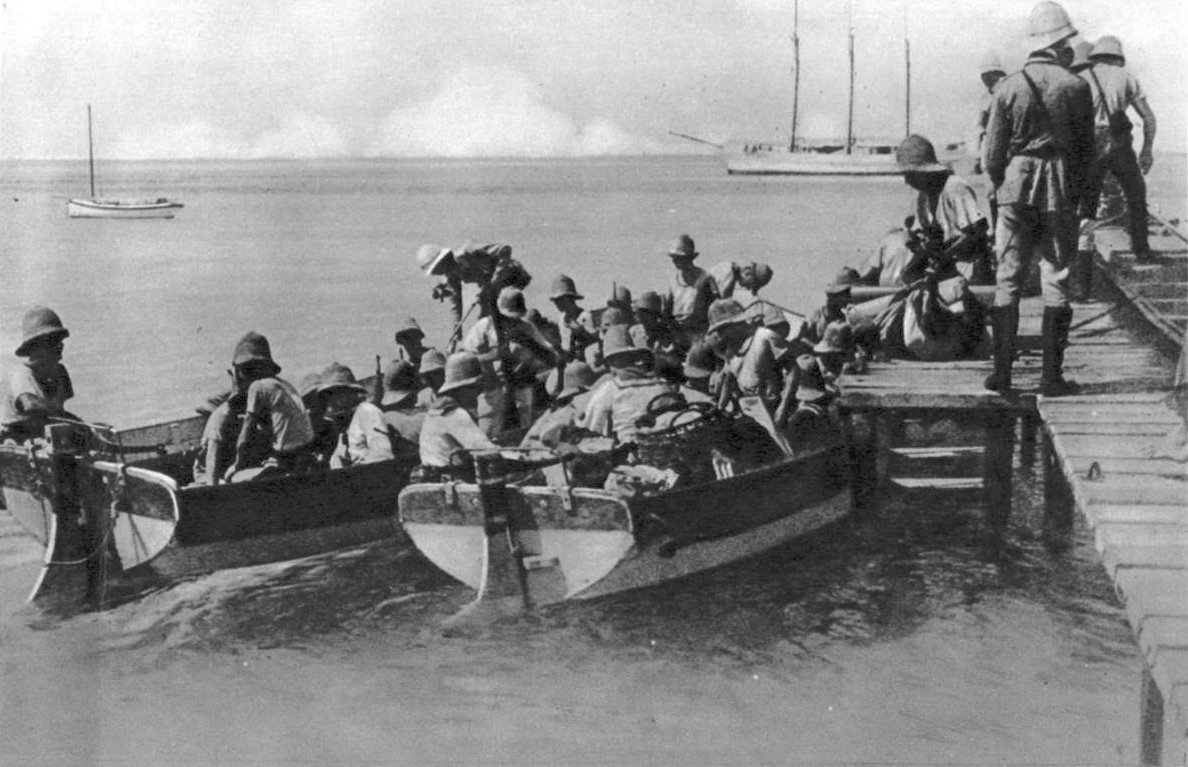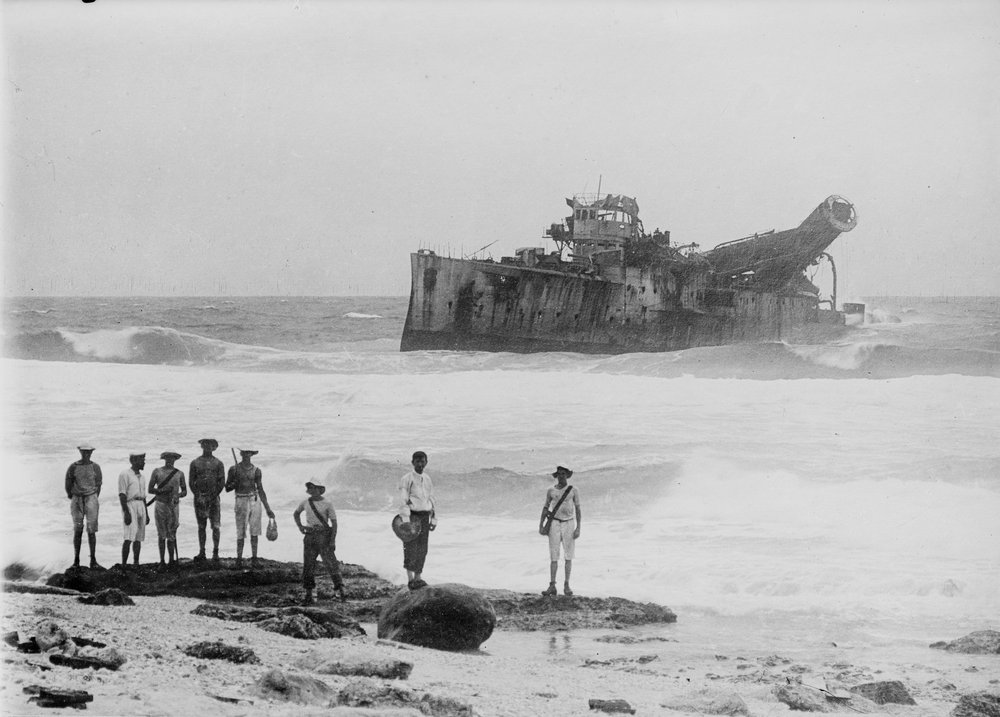When we were kids, cocky braggarts were often silenced with “nee periya EMDEN-O?”. (Liberal translation: “You have the arrogance to presume you are an EMDEN?”). In colloquial Tamil, Emden is a fearsome, invincible entity. Now, how did a Germanic word sneak past linguistic purists into everyday Tamil? Blame it on World War-I.
When the WW-I began, Germany wanted to harass Allied shipping in the Indian Ocean, but had no Asian bases to support its fleet. Captain Karl von Muller proposed that he would run a “Lone-Ranger” mission on his warship, a Light Cruiser named Emden. He would refuel in neutral ports, loot Allied ships, using stealth as his main weapon. To heighten the surprise element, he even made cosmetic changes on the Emden’s exterior, making it resemble the British warship HMS Yarmouth. And, the phantom-pirate ship Emden was born.

A lone German ship in seas infested by the British Navy, was suicidal; but Muller and his crew were highly skilled and motivated. Between August and November 1914, they ran “hit-and-run” missions over a wide area from Diego Garcia to Dutch Indonesia, capturing, looting or sinking about 30 allied ships including Russian and French warships. Muller was wily, but he followed an ethical policy: no civilians would be hurt, all survivors would be rescued, treated honourably and off-loaded in a neutral port. Muller came from a military family, so honour was as important as valour.
On the night of 22nd September, the Emden sailed stealthily into the shores of Madras (modern Chennai), guided by the benign illumination of the High-Court Lighthouse. It unleashed a barrage of 125 rounds on the harbour fuel dump. Within minutes, about 350,000 gallons of oil went up in smoke. Just to rattle the British, it also fired random shots that broke the walls of the High-Court and the Port-Trust. Before the shocked shore-gunners could retaliate, the Emden had vanished. There was widespread panic in Madras, and it is believed that thousands of citizens quickly fled to small towns away from Madras, only to return after the war ended. By then, EMDEN had become a Tamil word!

In November, the Emden stopped at Cocos Islands, (between Indonesia and Australia) planning to disable the strategic British telecommunication station. The armed Shore-Party that landed managed to destroy the radio station; but before they could return to the Emden, an Australian warship attacked the Emden and wrecked it. Muller and the surviving crew were taken prisoner.

Muller was sent to a PoW camp in England and his crew to Tangling Jail, Singapore. But the spirit of Emden refused to die! In 1915, the Indian Guards of the Singapore Jail mutinied against the British. In the melee, some of the Emden crew escaped. In England, Muller did what a PoW must do: he escaped through a tunnel in 1917, but was quickly recaptured.

What about the Shore-Party at Cocos? They commandeered a sailing ship and reached Dutch Indonesia, which was a neutral territory. They re-provisioned, evaded Allied patrols and sailed to Yemen. After surviving a Bedouin attack, they travelled by land to the safety of Constantinople.
After the War, Muller led a quiet life, rarely talking of his heroic past. When someone suggested that he write a book about the Emden exploits, he replied that he never wanted to make money from the blood of his comrades. Ironically, the real Emden never bragged!
The High Court in Chennai still stands untarnished near the harbour. Join Storytrails in Chennai on the British Blueprints trails to discover more stories of British Madras hidden in plain sight.

Archives
- January 2022
- December 2021
- November 2021
- August 2021
- March 2021
- February 2021
- January 2021
- December 2020
- November 2020
- October 2020
- September 2020
- August 2020
- April 2020
- March 2020
- February 2020
- January 2020
- November 2019
- October 2019
- September 2019
- August 2019
- July 2019
- June 2019
- August 2017
- February 2017
- January 2017
- October 2013
Featured Posts
- Tales that pots tell: Keeladi excavations AUGUST 18, 2021
- The Last Grand Nawab: Wallajah FEBRUARY 10, 2021
- How Tej Singh became Raja Desingu of Gingee FEBRUARY 5, 2021
- How Shahjahan seized the Mughal throne JANUARY 28, 2021
- Alai Darwaza – Qutub Minar Complex, Delhi NOVEMBER 21, 2020
- Marking History through British buildings NOVEMBER 17, 2020
- The last great queen of Travancore NOVEMBER 7, 2020
- Brahmi and the evolution of scripts OCTOBER 15, 2020
- The Cambodian King of Kanchipuram OCTOBER 14, 2020
- James Prinsep – the man who read the writing on the wall OCTOBER 10, 2020
- Mariamman – the Village Goddess who travelled SEPTEMBER 30, 2020
- Misnamed Monuments of Mamallapuram SEPTEMBER 28, 2020








